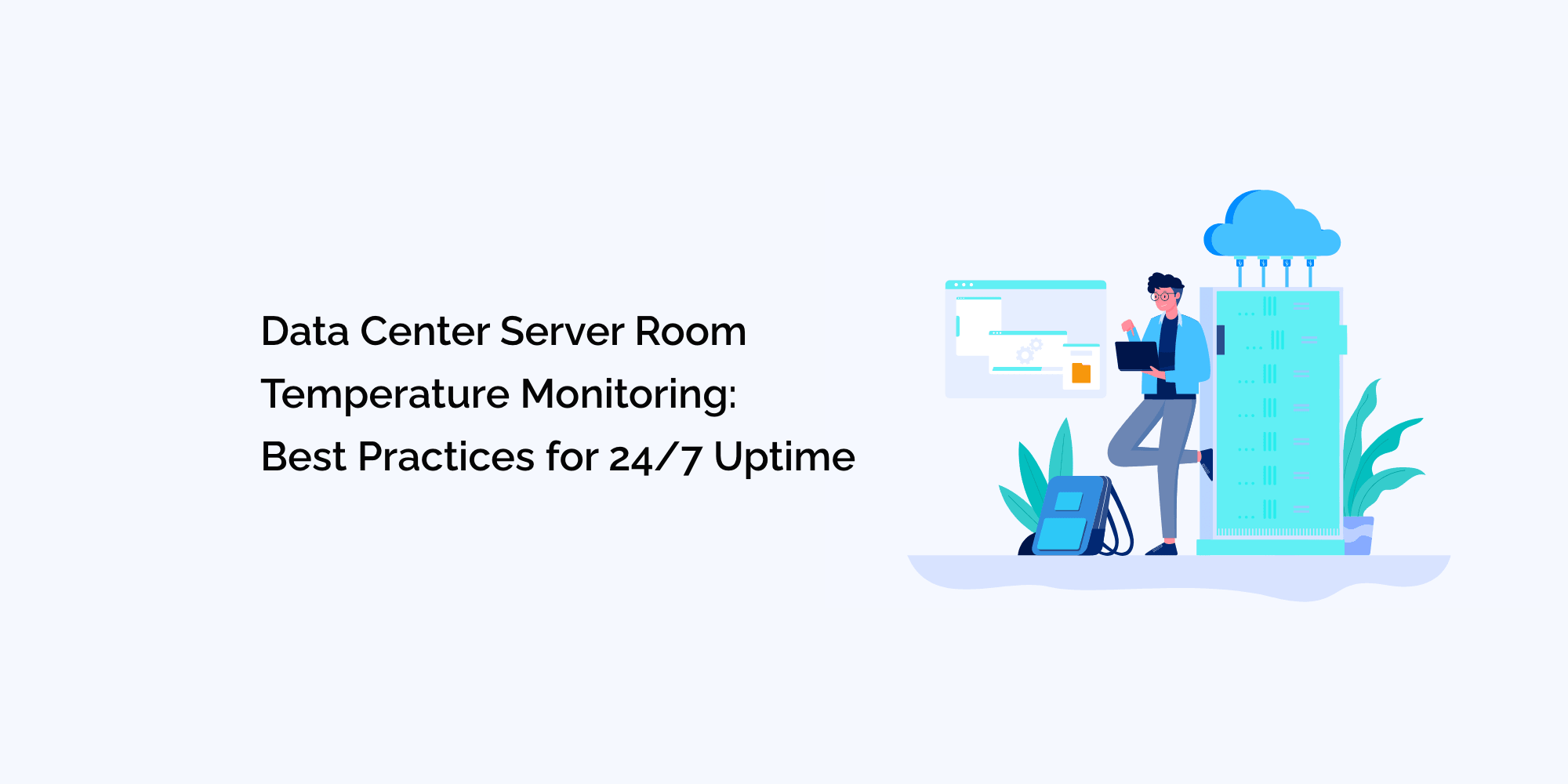Data centers are the lifeline of modern businesses, providing the necessary infrastructure for storing, processing, and managing critical data. The efficient performance and reliability of data centers heavily depend on maintaining optimal environmental conditions, particularly the temperature within the server rooms. Temperature monitoring is a crucial aspect of data center management, ensuring that hardware components operate within safe temperature ranges to avoid overheating and potential failures. In this comprehensive blog, we will explore the significance of data center server room temperature monitoring, the impact on 24/7 uptime, and best practices to achieve seamless operations and uninterrupted services.
The Importance of Data Center Server Room Temperature Monitoring:
Data center server room temperature monitoring is essential for several reasons:
-
Hardware Reliability: Servers and other hardware components are sensitive to temperature fluctuations. Monitoring ensures that they operate within the recommended temperature range, enhancing their reliability and lifespan.
-
Preventing Hardware Failures: Overheating can lead to hardware failures, causing costly downtime and potential data loss.
-
Optimizing Cooling Efficiency: Real-time temperature monitoring allows administrators to optimize cooling systems for energy efficiency without compromising performance.
-
Proactive Issue Detection: Early detection of temperature fluctuations enables administrators to take immediate action and prevent critical issues.
- Enhanced Uptime: Maintaining consistent temperatures within the optimal range contributes to improved uptime and uninterrupted services.
The Impact of Temperature on 24/7 Uptime:
Temperature directly affects data center uptime and performance:
-
Thermal Throttling: High temperatures can trigger thermal throttling, a mechanism where servers reduce performance to prevent overheating. This can result in slower data processing and response times.
-
Hardware Failure: Overheating increases the risk of hardware failures, leading to unplanned downtime.
-
Environmental Factors: Data center temperature can fluctuate due to external factors, such as weather changes or cooling system malfunctions. Monitoring helps address these changes proactively.
- Cooling System Efficiency: Efficient cooling systems ensure that servers operate within the optimal temperature range, reducing the chances of downtime due to overheating.
Best Practices for Data Center Server Room Temperature Monitoring:
To achieve 24/7 uptime and efficient data center operations, follow these best practices for temperature monitoring:
-
Strategic Sensor Placement: Install temperature sensors strategically throughout the data center to monitor temperature variations effectively. Sensors should be placed near critical hardware components and in hotspots.
-
Redundant Monitoring: Implement redundant temperature monitoring systems to ensure continuous monitoring, even during system failures or outages.
-
Regular Calibration and Maintenance: Periodically calibrate temperature sensors to ensure accuracy and reliability. Regular maintenance ensures optimal sensor performance.
-
Remote Monitoring and Alerts: Utilize temperature sensors with remote access and alert capabilities for immediate response to temperature fluctuations.
-
Analyze Temperature Trends: Regularly analyze temperature data to identify trends and make informed decisions about cooling strategies.
-
Integration with Monitoring Platforms: Integrate temperature monitoring systems with existing infrastructure management platforms for centralized and streamlined data analysis.
-
Disaster Preparedness: Develop a comprehensive disaster preparedness plan that includes protocols for temperature-related emergencies.
- Staff Training: Educate data center staff on temperature monitoring procedures and the importance of cooling efficiency.
Real-Time Temperature Monitoring Solutions:
Real-time temperature monitoring solutions provide immediate access to temperature data and alerts. These solutions often include wireless sensors, cloud-based data storage, and mobile applications for remote access and notifications. Real-time monitoring empowers data center administrators to respond swiftly to temperature fluctuations and prevent downtime.
Environmental Sensors Integration:
Integrating temperature sensors with other environmental sensors, such as humidity and airflow sensors, offers a holistic view of data center conditions. Understanding these factors helps optimize cooling strategies and ensures that the environment is conducive to efficient data center operations.
Leveraging AI and Machine Learning:
Incorporating AI and machine learning technologies into temperature monitoring systems enables predictive analytics. These technologies can analyze historical temperature data and identify patterns that might lead to potential temperature-related issues. Proactive measures can then be taken to prevent downtime.
Continuous Monitoring and Trend Analysis:
Continuous temperature monitoring and trend analysis provide valuable insights into the long-term performance of data center cooling systems. By understanding temperature trends over time, administrators can make data-driven decisions to optimize cooling efficiency and ensure 24/7 uptime.
Regular Review and Improvements:
Data center administrators should conduct regular reviews of temperature monitoring systems and cooling strategies. Periodically reassessing the efficacy of current approaches allows for continuous improvements and ensures that the data center remains at peak performance.
Conclusion:
Data center server room temperature monitoring is crucial for achieving 24/7 uptime and ensuring efficient data center operations. By proactively monitoring temperatures, administrators can prevent hardware failures, optimize cooling efficiency, and maintain hardware reliability. Implementing best practices, such as strategic sensor placement, redundant monitoring, and real-time alerts, empowers data center administrators to respond promptly to temperature fluctuations and potential issues.
Integrating temperature sensors with other environmental sensors and leveraging AI and machine learning technologies provides a comprehensive view of data center conditions and enables predictive maintenance. Regular review and improvements ensure that temperature monitoring systems remain effective and contribute to the continuous improvement of data center performance.
In conclusion, prioritizing data center server room temperature monitoring as part of an overall data center management strategy ensures seamless operations, uninterrupted services, and a competitive edge in the digital landscape.








